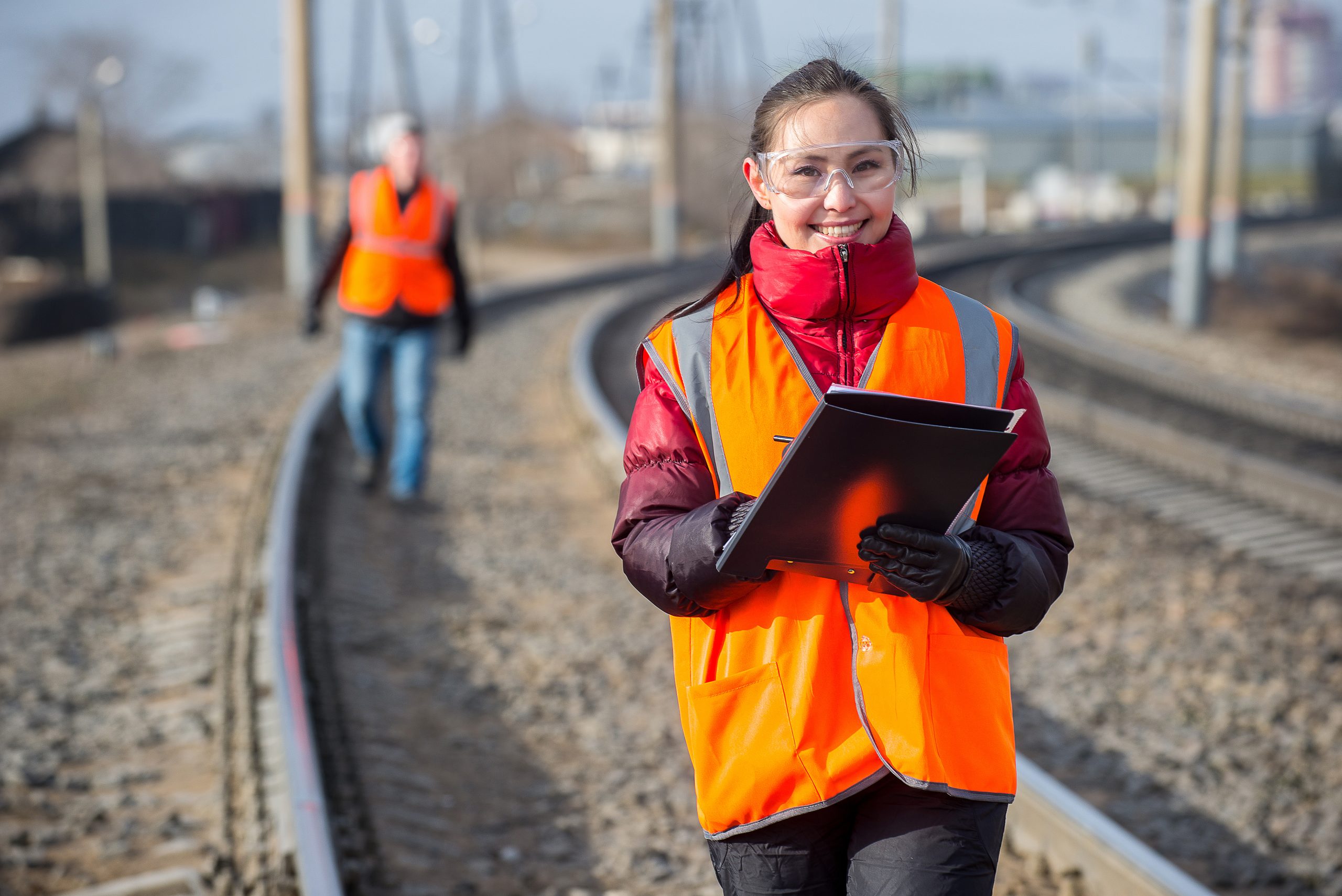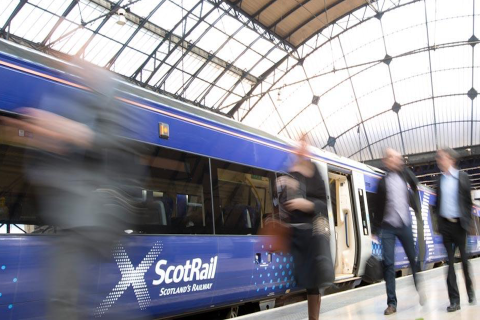Value.Space: Satellite data for predictive maintenance in rail

Value.Space, a UK-based technology firm, uses satellite data to enhance the safety and efficiency of railway systems. RailTech interviews co-founder Reijo Pold, who delves into their use of the European Space Agency’s Sentinel-1 satellite data to advance predictive maintenance in rail.
With the aim of “detecting movement risks for rail infrastructure and supporting assets for service continuity,” Value.Space’s technology falls under the umbrella of predictive maintenance, which differs from routine, preventative, corrective, or emergency maintenance. Predictive maintenance in rail uses data analysis and monitoring technologies to foresee and address potential failures before they occur, enhancing safety, reducing downtime, and cutting costs associated with unplanned repairs.
Value.Space’s journey began at Lloyd’s Lab, part of Lloyd’s of London. “Over four years ago, my co-founder and I started exploring the intersection of technology and commercial applications, beginning at Lloyd’s Lab—a part of Lloyd’s of London, which is the world’s leading insurance market. Lloyd’s Lab selects a few from many applicants to find strategic technologies that can improve efficiency or generate more revenue for insurers. We were among the few selected in 2020, matched with top-tier insurance corporate advisors,” shares Pold.
Focusing initially on high-risk asset classes like dams, which require regular checks, “we expanded to mining and general infrastructure, eventually addressing broader requests from insurers to include highways, railways, and properties,” he continues. In the ever-evolving landscape of railway infrastructure management, marked by the onset of climate change and the increasing age of global infrastructure, this type of monitoring offers an alternative manner of inspecting infrastructure.

Climate change
As climate change exacerbates, its impacts on infrastructure are becoming more evident, highlighted by the shifting conditions of soils that underpin critical systems like railways and housing. “Climate change has made our work increasingly crucial, affecting the foundation of essential infrastructure like houses and railways. The alteration in soil conditions due to weather extremes is now a direct concern in our assessments,” stresses Pold.
This variability, manifesting as soil contraction or expansion, is causing increased losses in the insurance industry and challenges for operators. For instance, “Network Rail in the UK is investing three billion pounds to mitigate climate-related risks,” highlights Pold. This is spurred by frequent severe weather events in the UK, including 14 major storms over the past year, which have intensified the threats of landslides and necessitated substantial repairs to foundational supports.

Beyond improving safety and efficiency in the face of climate change, Pold points to the fact that Value.Space’s approach aligns with Environmental, Social, and Governance (ESG) principles: “Environmentally, preventing infrastructure failures helps avoid ecological damage. Socially, we improve safety and minimise disruptions, and from a governance standpoint, we support effective management and maintenance practices. Our digital monitoring methods significantly reduce the carbon footprint compared to traditional on-site inspections.”
Technological edge and advantages of open source data
The core of Value.Space’s technology uses the Sentinel-1 satellite, operational since 2014, and equipped with advanced radar capabilities that provide millimetre-scale accuracy in surveys thanks to a highly sensitive radar. This allows for unprecedented monitoring of structural changes over time, offering rail operators the ability to detect potential problems before they escalate into costly and dangerous situations.

Their approach does not only rely on satellite imagery, but incorporates various data layers like temperature, precipitation, and specific site conditions, “which, combined with our engineering expertise, allow us to assess the health of railway infrastructure comprehensively,” adds Pold. Additionally, Value.Space “works closely with underwriters, risk engineers, and financial controllers, demonstrating our capabilities and learning from their daily challenges to enhance risk assessment and insurance provision.”
“The data we gather is open-source, making our work both accessible and cost-effective. This is vital for our predictive maintenance services, which are designed to be scalable and economically viable for large infrastructure networks,” he continues. “Fortunately, our use of open-source satellite data simplifies regulatory compliance. Our biggest challenge has been industry education — introducing new technology to a field accustomed to traditional methods requires significant effort in demonstration and training. We’re also focused on building public awareness to expand understanding and adoption of our technology.”
Case Studies in Railway Infrastructure
Value.Space’s impact on railway safety and efficiency can be seen in several case studies where their technology would have identified issues that eventually led to service disruptions. For example, ground shifts that impacted rail services would have been detected early, enabling preemptive measures to avert service interruptions and reduced repair costs. These case studies are example cases, as the data relating to client cases is proprietary.
Del Mar Bluffs rail track instability
In California, the Del Mar Bluffs on the second busiest passenger rail corridor in the U.S. have suffered from chronic erosion and instability. Since 2018, eight surface slides have disrupted rail traffic. In response, Value.Space conducted a satellite-based survey from 2021 to 2024, identifying 17 movement clusters, which could be useful for engineers in their continued efforts to stabilise the bluffs.

Nuneham Rail Viaduct movement damage
The historic Nuneham Rail Viaduct in Oxfordshire, UK, faced significant structural challenges when movement was detected at its south bank abutment in 2023. Network Rail had to suspend services, leading to extensive emergency repairs involving 800 workers and 60,000 man-hours. Value.Space’s post-event satellite survey revealed significant movement two years before the incident, which could have provided early warning for preemptive measures if used sooner, according to Pold.

Scarborough landslide damage to rail track
In October 2023, a landslide in Scarborough, New York, severely disrupted the Hudson Line of the Metro-North Railroad, affecting thousands of commuters and necessitating the removal of 900 tons of debris. Value.Space’s post-event assessment pinpointed a developing landslide risk up to a year before the actual event, underscoring the potential of satellite monitoring to foresee and mitigate such catastrophic incidents before they impact rail operations.

Looking Forward
As the industry continues to recognize the importance of predictive maintenance, Value.Space aims to establish itself as an indispensable tool for global infrastructure monitoring. Their long-term goal is ambitious: to develop “a comprehensive alarm system for the world’s infrastructure,” akin to those used in homes and vehicles, but on a global scale, explains Pold. “This system would allow for real-time monitoring and rapid response to potential threats, fundamentally transforming how we manage infrastructure resilience worldwide.”
For railway operators and infrastructure managers, Value.Space offers a glimpse into the future of maintenance and safety, as they build public awareness and further refine their technology. This technology is set to play a pivotal role in the future of railway infrastructure management, with “new companies coming into this space very quickly,” due to fast-growing interest, according to Pold.
Further reading:




